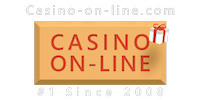Video Lottery Terminal: Check Out All You Need to Know
Video Lottery Terminal, which is popularly known as VLT, is a type of electronic gambling machine. It can also be called the video lottery, video slots, or Video Gaming Terminal (VGT). Here is all you need to know about this gambling machine.
A video lottery terminal (VLT) is a type of electronic gambling machine that is also known as a video gaming terminal (VGT), video lottery, or slots. They are usually run by a local lottery and are located in licensed establishments such as restaurants and bars. VLTs offer a variety of games, basically keno and video slot machines. Their precise operation is determined by local law: many VLTs are standalone devices that contain a random number generator. Each terminal is linked to a centralized computer system, which enables the lottery jurisdiction to oversee gameplay and gain its revenue share. Each stake on a VLT has a random outcome. VLTs in some territories lack a random number generator and instead display results from a fixed pool controlled by the central system (in a similar fashion to scratch-off lottery tickets).
Canada
VLT programs are available in nine Canadian provinces, with British Columbia being the notable exception.
VLTs were first introduced in Atlantic Canada, with New Brunswick being the first province to do so in 1990, and the other Atlantic regions getting on board in 1991. The Atlantic Lottery Corporation has been solely accountable for all VLT operations in the province since 2002, instead of having private owner-operators cover their costs. The ALC had already been running the VLT programs in Newfoundland and Labrador and Nova Scotia since their inception, while Prince Edward Island handed over its VLTs to the ALC in 2003. VLTs were first used in Quebec in 1994.
VLTs first appeared in Western Canada in 1991, with Alberta trialing them at the Calgary Stampede and Klondike Days before launching a province-wide program the following year. Manitoba initially only used them in rural areas, but they were expanded to Winnipeg and the Assiniboia Downs race track in 1993. To use VLTs, Nova Scotia began requiring users to register in an account card program called “My-Play” in 2012. The government ended the strategy in 2014, stating its plan to permit gamers to sign up anonymously without providing personal information (“light” enrollment) as defeating the system’s purpose—many gamers only used the cards briefly before discarding them. Alberta apportioned some of its VLTs in the 2000s to raise the amount permitted at particular sites, effectively minimizing the number of sites in operation. Quebec declared in January 2017 that it would re-allocate and reduce its VLTs from 12,000 to less than 10,000 over the next couple of years, as well as making the number of sites and machines available in an area proportional to the population, and a focus on putting them in leisure locations to enhance group entertainment and socialization.
Long a holdout, the Ontario Lottery and Gaming Corporation (OLG) introduced VLTs branded as “Tap ‘N Play” (previously “TapTix”) in the mid-2010s. Both Alberta and the Atlantic Lottery modernized their VLT networks in the early 2010s, entering into supply agreements with numerous gaming providers, including the current IGT, Aristocrat, and Scientific Games (WMS and Bally Technologies). Rhode Island, Oregon, New York, South Carolina (previously), Louisiana, Delaware, Montana, West Virginia, Maryland, Ohio, and Illinois are among the other US states that have legalized video lottery games. Delaware, Rhode Island, and West Virginia previously shared a VLT game called Cashola.
Southland Gaming of the Virgin Islands manages a legitimate video lottery in the US Virgin Islands.
Racinos
When West Virginia approved MTR Gaming Group to add VLTs to Mountaineer Race Track & Gaming Resort in Chester in 1990, it pioneered the notion of racinos. Racinos are distinguished from standard VLTs by the fact that all video lottery games are accessed on a slot machine. Louisiana, Delaware, Ohio, New York, West Virginia, and Rhode Island are among the states that have allowed VLTs in racinos.
Non-lottery
VLT-style keno, bingo, and poker machines are legal to work in the private sector in Montana. Other than Nevada and New Jersey, Montana was the first state to authorize slot machines in the 1970s.
In contrast to other states, the state lottery does not have jurisdiction over gaming devices. The state legislature included another type of game, known as “line games,” to the list of permitted games in 2011.
Montana’s games, like those in Louisiana, are not formally part of the state lottery.
Class III video lottery
Only South Dakota and Oregon now use Class III gaming technology in their VLT games. Oregon’s VLT program was inspired by those used in Canada. The machines used in Montana are likewise Class III machines, but because they are not linked to the Montana Lottery, they are not officially “video lottery terminals.” This is the exact form of gaming that is available in Atlantic City, Connecticut, and Nevada, New Jersey, including the vast majority of tribal casinos. The state of Oregon currently provides its players with a 91-95 percent payout on all of its games. Montana and South Dakota laws require payouts to be greater than 80 percent, even though actual payouts in these two states range between 88 and 92 percent.
Most US jurisdictions prohibit VLTs and the ones that accept have faced the exact criticism as Canadian provinces. Non-players, on the other hand, have displayed tolerance for the slot machines.
- $1000 Free No Deposit
- High Stakes Online Casino: Top 10 Sites for High Rollers
- 50 Free Spins No Deposit
- 100 Free Spins No Deposit
- 1000 Free Spins No Deposit







